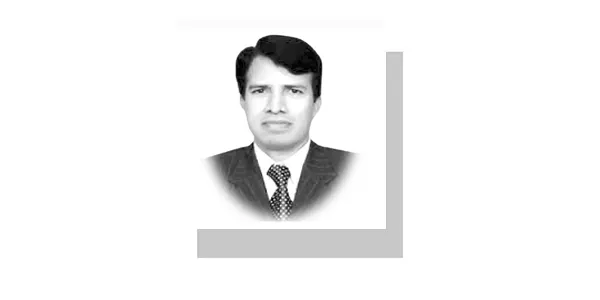WITH the advent of 21st century, there evolved new technological advancement driven modern warfare at the global horizon. This modern warfare has seriously hampered the traditional concept of the security of nation states. Gone are days! when militaries used form-up for fighting wars with marching columns attacking each other along the traditional borders with a clear orientation of the opposing forces while making using of best tactical positioning. With the advent of new technological advancements like cyberspace and artificial intelligence (AI), even the militaries with nuclear arsenals are surprised. Indeed, the physical domain of the warfare is undermined giving way to perceptive domain with more destructive forms of warfare.
These modern forms of the warfare have enhanced the threat perception and brought uncertainty since there are no clear indicators of wars/ conflicts until their impacts are felt. Through hybrid warfare and grey zone conflicts the traditional format of threat perception has diluted while the proxy actors have taken a lead role. Whereas, the new and modern forms of the warfare have impacted every nation state and communities all over the world, Pakistan is facing this challenge with more impetus and through a systematic manner. Four main factors seems to be basis of imposition of this form of warfare against Pakistan; a) the resilient masses that mainly focus on the ideology with very strong convictions, b) the pivotal geopolitical location of Pakistan, c) the nuclear status of the state of Pakistan, and d) the highly professional military being maintained by the state that strongly believe on its ideological bases.
All these factors are irritants for the regional and international forces who believe in power politics and regional and global domination at large. Since these forces cannot subdue Pakistan directly, therefore, opt to use the forms and format of the modern warfare to destabilize it internally. While analysing the contemporary political upheavals in Pakistan, one gets the impressions that there are very serious challenges to the state internally as well as externally. In order to implement their agendas, the rival forces are making best use of ancient Chinese warfare strategies, introduced by Sun Tzu. In his famous book; The Art of War, Sun Tzu wrote about this warfare as; “The supreme art of war is to subdue the enemy without fighting.” Starting from remote 1st Generation warfare, there have been evolutionary and revolutionary changes in the forms and format of warfare.
The series of these format and forms of warfare; starting from 4th Generation warfare are meant for achieving this advanced level; winning without fighting. In the 4th generation warfare (4GW), there was “blurring of the lines between war and politics” while undoing the distinction between civilians and the combatants in the process of war and conflict. It was decentralization of warfare with a wider combat zone. This form of warfare added a new dimension; the indirect format of fighting the war in the traditional military confrontations in the form of; espionage, international politics, media manipulation, and trade wars.
The 5th generation warfare (5GW) added non-kinetic military action into the traditional pattern of warfare. The elements of non-kinetic warfare include; social engineering, misinformation, cyber-attacks, along with usage of emerging technologies like artificial intelligence. The less debated 6th generation warfare (6GW) is very discrete and more damaging. In this impending warfare, the advanced military will make use their “data-processing and C31 systems, smart weaponry, EW and air defence assets, and space-based reconnaissance and weaponry”. While using these means, the advanced militaries of the world will be able to inflict political and military defeat to their enemies discreetly at a low cost.
The 7th generation warfare (7GW) will be absolutely automated warfare; causing a shut-down of the commercial and military communications systems of the enemy. Besides, by making use of electronic warfare, the power grid and water utilities will be controlled. In a way, the rival will be totally paralyzed including disabling their economy and banking system. After this nothing will be left with the rival states to fight with those powers having this technological edge. The 8th generation warfare (8GW) is yet a step forward from 7th generation warfare. In this format of warfare no one will die on either side of the opposing forces. In this format, the superior militaries will have the capabilities to temporarily incapacitate the rival militaries and their masses. The broad concept includes; the superior military will move into enemy’s areas after zapping their troops. In the subsequent phase, the advanced military will disarm the enemy and destroy their weapons-making capabilities. While the 7th and 8th generation warfare is future battle field, armies of world’s advanced countries are fully practicing the 5th and 6th generation warfare.
The prevailing perilous situation indicates that; the state and society of Pakistan are under the strong grip of perspective warfare at three levels; a) socio-political level, socio-economic level and at the level of security of the state and society of Pakistan. There has been unprecedented upsurge in the social unrest in Pakistani society in last few years. This unrest has given birth to new social, religious and political fault-lines in the wider Pakistani society. These fault-lines are being exploited by the rival forces to the disadvantage of Pakistan. Unfortunately, there have been no worthwhile efforts by the ruling elites to address the grievances of effected and deprived communities which further enlarged the gulf between masses and ruling elites. There is an immediate need to devise practical policies to bridge the gap between masses and the state/Government. The best way forward is to take tangible measures to redress grievances of the masses both in perspective and practical domains. In all eventualities the Government should avoid using coercive means for pushing the masses to walls.
— The writer is Professor of Politics and IR at International Islamic University, Islamabad.










